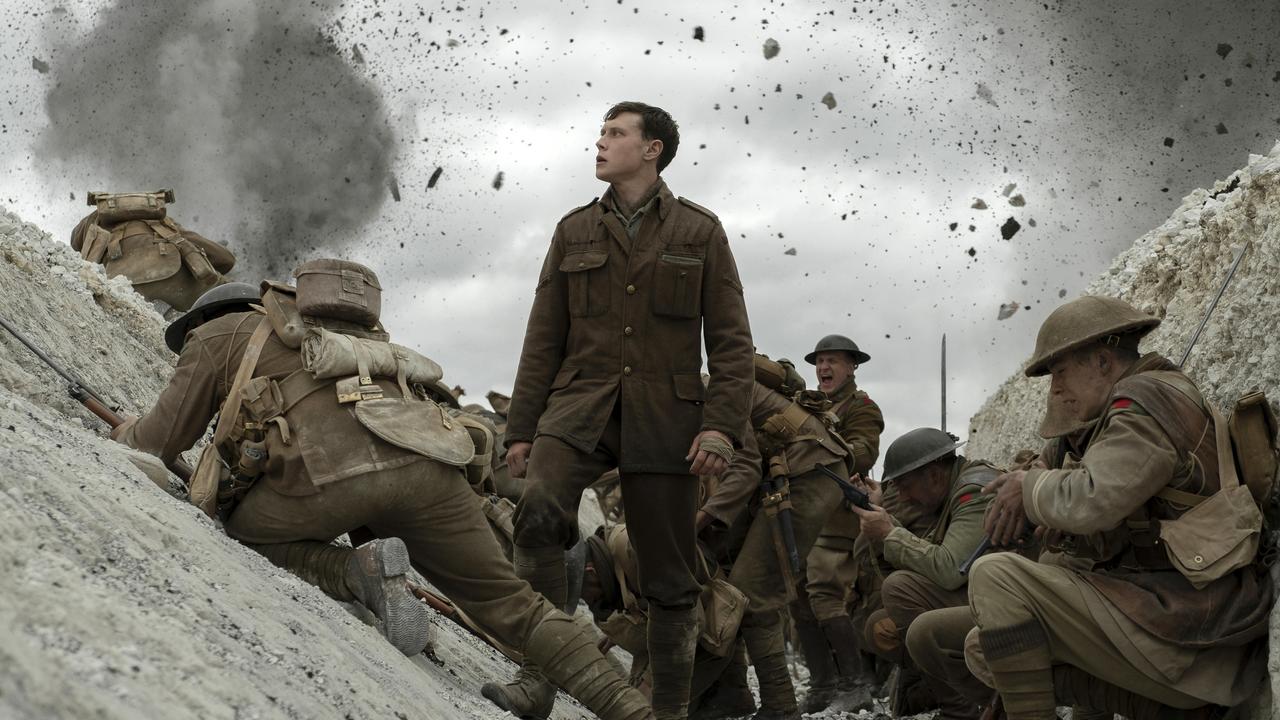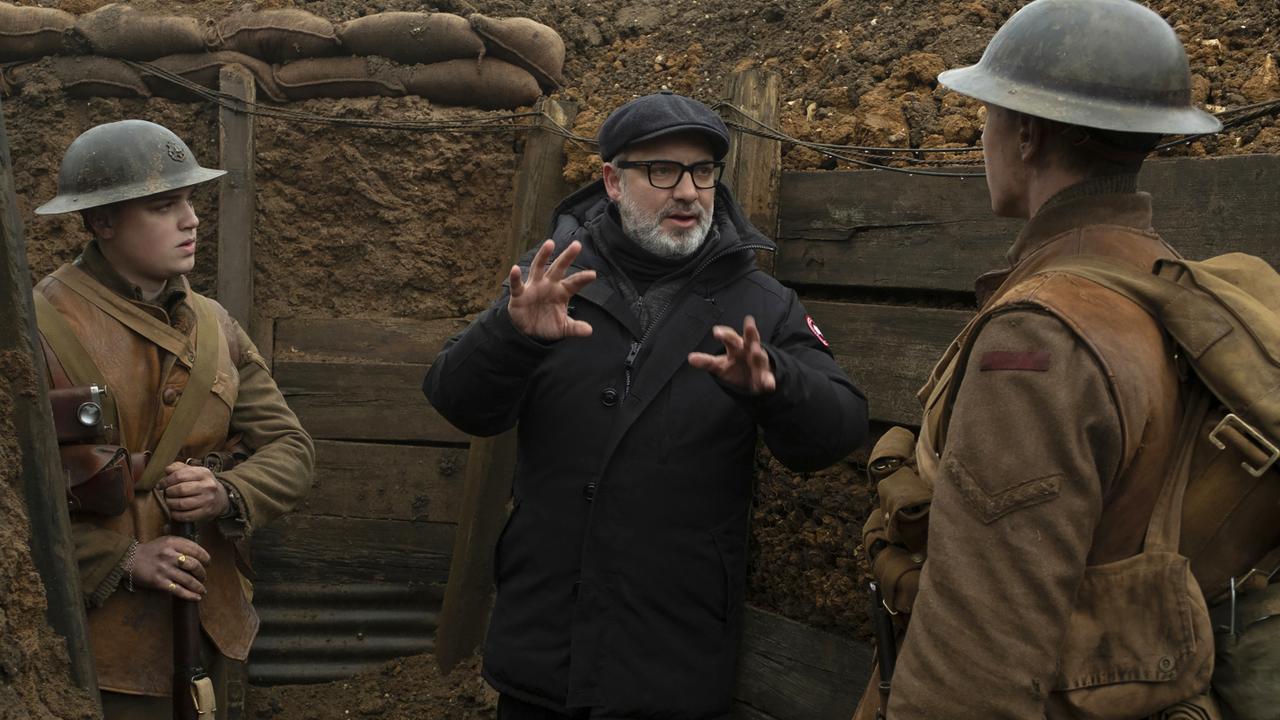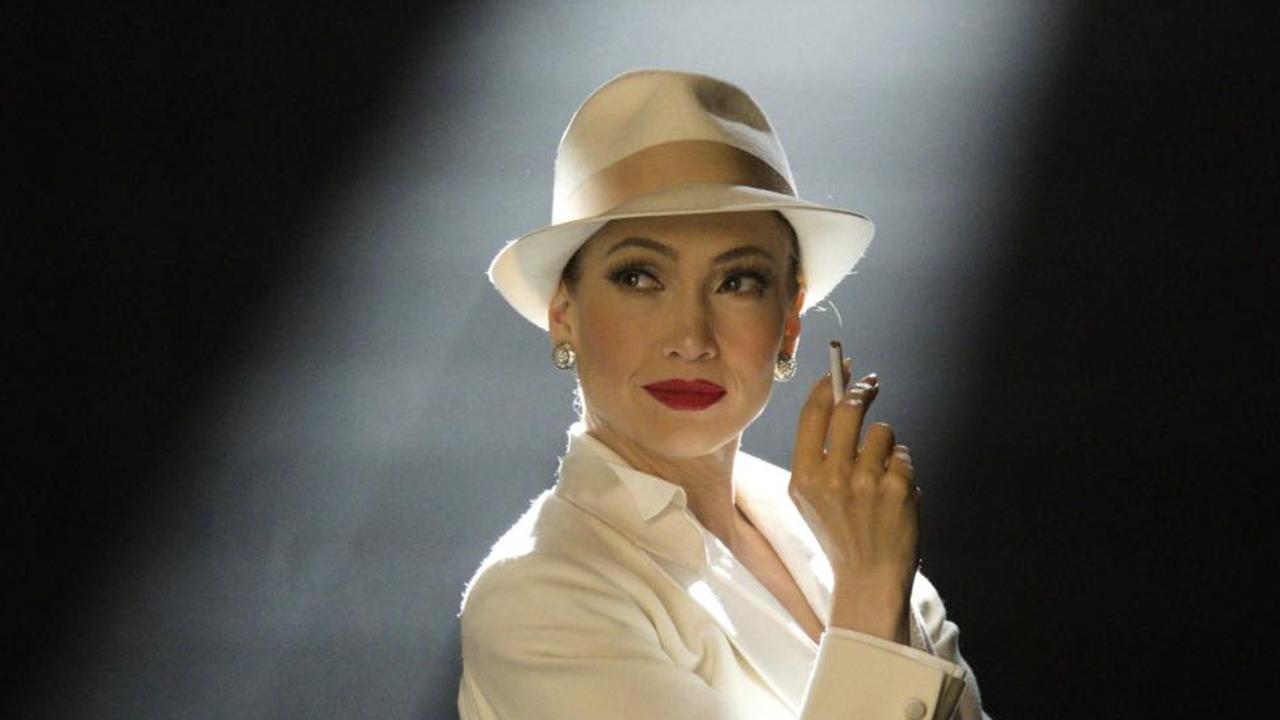1917: How Sam Mendes pulled off the impossible
The Oscar frontrunner’s ambitions were so wild and fanciful, the movie should never have been made. Here’s how they pulled off the impossible.

Probably the first thing you’re going to hear about 1917, the highly accomplished war film that just won two Golden Globe awards and is nominated for 9 BAFTAs, is that it’s one continuous tracking shot.
If you’re unfamiliar with the concept, a “one-shot” movie or sequence is when the frame doesn’t cut away to a different shot.
So, if there’s a scene between two actors, for example Leonardo DiCaprio and Brad Pitt, you might see Leo talking to Brad and then a shot of Brad looking back at Leo. But in a one-shot movie or frame, the camera stays on the subject(s) and moves along with them, “tracking” them. There are no edits.
It’s an incredibly hard thing to do well and it goes against filmmaking conventions.
1917 is composed to make it appear as if it’s one continuous shot when it actually cleverly hides its edits, such as by panning in to someone’s back and then seemingly panning out when in reality that’s where the cut is hidden.

But 1917’s director Sam Mendes (American Beauty, Skyfall, Jarhead) doesn’t want you to think too much about the trickery behind the camera, he wants you to be in the movie.
“One of the things I wanted to make sure when the audience see the movie is they don’t think too much about how it was done. I want them to lose themselves in the story,” Mendes told news.com.au.
“I want to be careful to not pull an audience out and make them think about the way you’re telling the story rather than the story itself.”
Having said that, Mendes was still happy to reveal how this ambitious and sweeping war epic was made, from the six months spent rehearsing to the unintended “knockdown” that ended up in the final film.
Co-written by Mendes and Krysty Wilson-Cairns, 1917 follows the journey of two young soldiers entrusted to deliver a lifesaving message through enemy territory while facing impossible odds.
It’s a simple story that enables Mendes to contain his wild technical ambitions within the confines of a clear narrative path.
RELATED: 1917 is an immersive emotional experience

There are few true one-shot movies. Alexander Sokurov’s 2002 film Russian Ark is one – 96 minutes of tracking through various tableaus in the Winter Palace.
But the most prominent examples of one-shot movies are laced with hidden edits, such as Alfred Hitchcock’s Rope and Alejandro G. Inarritu’s Oscar-winning Birdman, the latter of which had, by one estimate, as many as 28 edits.
But a war epic, with all the mandated action, big set pieces and large body of extras, is a lofty genre to attempt such a feat. There is some precedence, of course, notably Joe Wright’s 2007 film Atonement, which featured a five-minute tracking shot on the beaches of Dunkirk, the camera swirling amid the chaos.
And Mendes himself did something similar with the opening sequence of Spectre, the previous James Bond movie that featured Daniel Craig’s super spy weaving through a Day of the Dead parade in pursuit of a baddie.

So while 1917 isn’t one true continuous shot, it was still an extremely tough feat to pull off.
“The longest take we did was nine minutes,” Dean-Charles Chapman, one of the two leads in 1917, told news.com.au. “And the last thing you want to do is be the one to cock it up.”
Chapman admitted there were definitely times when he was the one who made a mistake at eight-and-a-half minutes, but that wasn’t always a bad thing.
“We rehearsed it for six months,” he said. “But there were still mistakes, that’s what happens. What’s nice about this is you are able to welcome in mistakes because it makes it realistic and authentic.
“In the finished film, there are a lot of mistakes – me slipping over in No Man’s Land – but that only adds to it being realistic.”
There’s a sequence in which the two young leads, the other played by George MacKay, have to cross No Man’s Land, a large stretch of land between enemy trench lines. The landscape is laden with mud, craters, decaying corpses and all manner of obstacles.
“No Man’s Land was definitely one of the toughest things to do, and everything you see on the screen is practical,” Chapman recalled of his experience. “There’s a bit in No Man’s Land where the camera lowers down to Schofield’s (MacKay) feet and we’re just slipping everywhere.
“That’s not acting, that’s genuinely us trying to walk. Conditions were very tough, very realistic.”

Mendes said because the rehearsal process was so vigorous, he was cognisant to make last-minute amendments to keep it fresh.
“Even though you’re trying to create precision behind the camera, you want a feeling of spontaneity and life in front of the cameras. You want it to feel like they’re living it rather than acting it.
“Sometimes rehearsals can kill something and make it automatic that you no longer feel like it’s real.
“So often I would throw little changes in right at the last minute to keep them completely alert.”
But sometimes, the best thing for a shot is an accident – such as the scene of MacKay running parallel to the trench line while swarms of soldiers are charging in a perpendicular direction.
“George is running the line, and he gets knocked over and that wasn’t planned. He was knocked off his feet by accident,” Mendes said.
That scene, while unplanned in the hours of rehearsals, ended up in the finished film.

In order to choreograph those precise movements between the actors and the camera, the gargantuan sets of trenches, farms and the labyrinthine ruins of a burning town were all constructed after the scenes had been rehearsed.
“You couldn’t construct a set until you’ve rehearsed it,” Mendes explained. “In other words, the starting point was an empty field, walking with scripts in hand, trying to judge the distance of everything.
“We couldn’t build a trench until we knew how much trench we needed. We couldn’t build No Man’s Land until we knew how far it would be, and the same goes for farmhouses, orchards, woods, roads, canals and burning towns.
“All of those things could only be constructed when we paced it out. So everything was rehearsed, flags were planted in the ground to mark out where we thought they should be and how long, and then we’d dig a bit and then rehearse a bit more and add people and rehearse a bit more and make changes.”

Even though 1917 has a continuous flow, it was actually filmed up and down Britain, including in Wiltshire, Teesdale, Salisbury Plain, Scotland and in Shepperton Studios.
But the transitions from location to location was seamless on screen.
“The goal was to make it look like it was the same shot, and stylistically it needed to feel unified,” Mendes said. “You must not spot any shifts or that anything had moved, so the visual language must be consistent.”
To that end, audiences might be surprised to find out Mendes and acclaimed cinematographer Roger Deakins used a combination of several different camera setups, including a tiny little Steadicam called a “Dragonfly” for which the production constructed a new camera body that was “very, very small”.
“Then we had a stabilised rig, we had wires, we had cranes, we had drones at one point, we had cameras on trucks, jeeps and motorbikes and just good old-fashioned handheld,” Mendes explained.
“Lots of different rigs but the goal was to make it feel like unity.”
Such an ambitious film might have intimidated a few people in the pitch process but, according to Mendes, “no one did a runner and said, ‘no way, I can’t do it’, but everyone raised an eyebrow”.
Chapman, best known to international audiences for playing the ill-fated Tommen Baratheon in Game of Thrones, said it hadn’t quite sunk in for him what the film would take until after he walked out of the building where his second audition was held and called his mother.
“I don’t think I was intimidated, I think I was excited,” Chapman said. “I think it sounded really impossible to do. You say a war film in one continuous take, it doesn’t really go together, it hadn’t been done before.”

Mendes confessed many of the film’s challenges caused him sleepless nights, but when you hear the story about why he wanted to make the film, it feels like it was all worth it.
Mendes’ grandfather was a World War I veteran, and 1917 is dedicated to him.
“I think he would love it,” Mendes said. “He was a storyteller himself, he was a novelist, and I think he always wanted someone else in his family to tell stories.
“I think he would’ve enjoyed the film on one level, but I think he would’ve also found it very difficult to watch because it was a war he spent a large part of his life not talking about it. It was a very dark time in his life and in the lives of anyone who went there.”
Chapman, who worked with a military adviser and also did his own research into the experience of British WWI soldiers, emphasised that as much as 1917 has dazzling technical achievements, it’s a very “human story”.
“There is much more to it than your average war film. It’s a very human story about two ordinary people,” he said.
“It’s really important to remember those who fought in the war because they sacrificed everything. I hope that’s what people take away from watching the film and it inspires them to look into their own ancestors’ history, maybe find out their story. It’s important to remember.”
1917 is in cinemas from Thursday, January 9
Share your movies and TV obsessions | @wenleima




